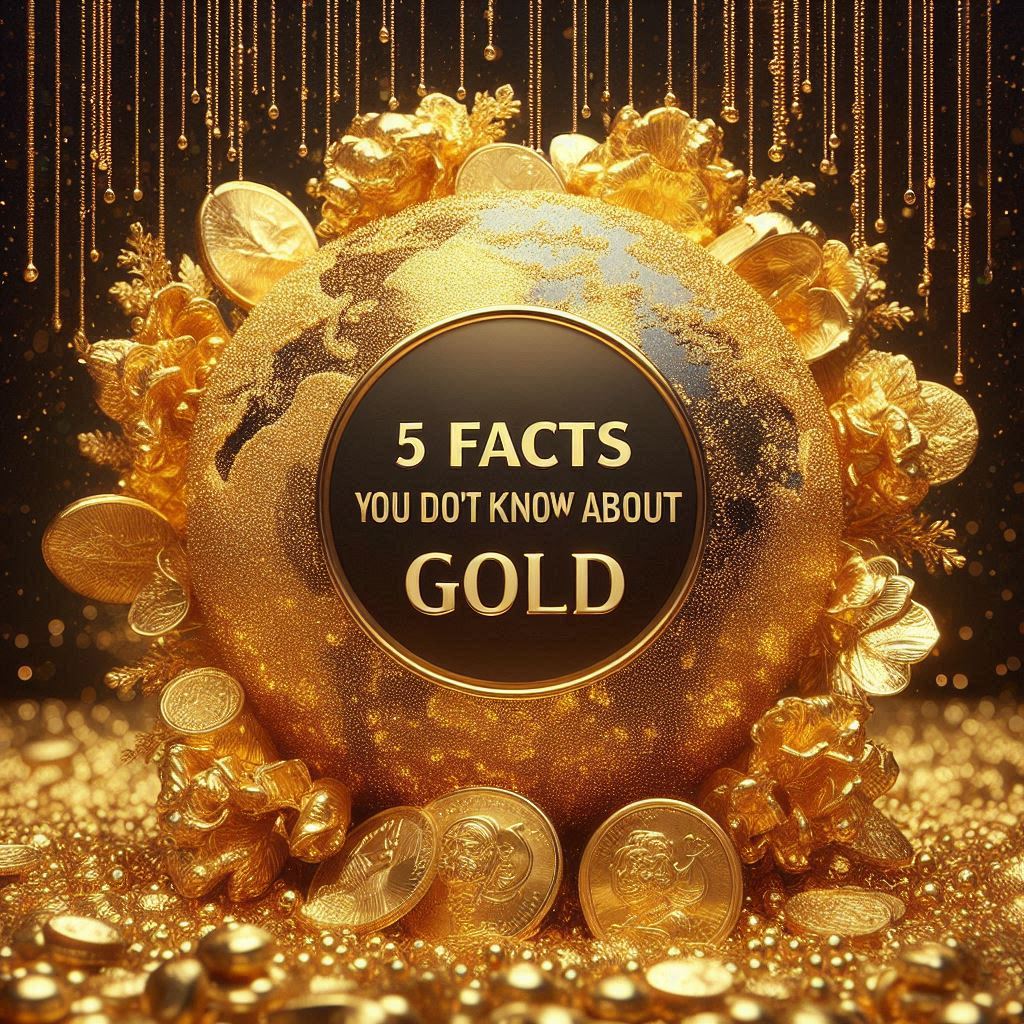
Gold has captivated humanity for thousands of years, playing a crucial role in global economies, trade, and culture. While many are familiar with gold's reputation as a store of value and a symbol of wealth, there are some lesser-known aspects of this precious metal that make it even more fascinating. Here are five intriguing facts about gold that you might not know.
1. Gold Is the Only Metal That Doesn’t Tarnish
Unlike silver, copper, and other metals, gold doesn’t tarnish or corrode over time. This is due to its unique chemical properties. Gold is non-reactive to oxygen and most other elements, which means it doesn’t rust or degrade when exposed to the air. This remarkable durability is one of the reasons why gold has been valued as a symbol of immortality and eternal wealth in many ancient cultures. Whether it's a gold coin buried for centuries or a piece of jewelry worn daily, gold maintains its lustrous shine and appearance indefinitely.
5. Gold Has Been Used for Over 5,000 Years
Gold's status as a symbol of wealth and power has persisted for millennia. It has been used by ancient civilizations, such as the Egyptians, Romans, and Sumerians, as a form of currency, ornamentation, and religious symbol. The first gold coins were minted by the Lydians around 600 BCE, and gold has remained a key asset in global economies ever since.
3. Gold Can Be Found in Space
Gold isn't only a terrestrial treasure—it's also found in space! Scientists believe that much of the gold in the Earth's crust came from asteroids that collided with the planet billions of years ago. Recent research suggests that asteroid impacts during the early solar system could have deposited large quantities of gold and other precious metals on Earth. In fact, it’s estimated that there could be more than RM3000 quintillion worth of gold in asteroids that orbit our solar system. This could potentially lead to future space mining ventures—though that is still a distant prospect.
4. Gold Is Used in Modern Technology
While gold is most commonly associated with jewelry and financial investments, it also plays a crucial role in modern technology. Due to its excellent conductivity and resistance to corrosion, gold is used in electronic components such as circuit boards, connectors, and even in the connectors for smartphones and computers. It is also used in high-precision instruments, medical devices, and space equipment. Gold's ability to remain stable and conduct electricity efficiently makes it an irreplaceable material in many high-tech applications.
5. There Is More Gold in the Ocean Than on Land
It may sound incredible, but there is more gold dissolved in the Earth's oceans than all the gold ever mined on land. Scientists estimate that the oceans contain around 20 million tons of gold, although it’s dispersed in such tiny concentrations that it would be practically impossible to extract it profitably with current technology. The gold in the ocean is spread out at about 0.0000004 parts per million, meaning that while the total quantity is vast, it is incredibly diluted. Despite this, the idea of oceanic gold mining has sparked interest in recent years as advancements in technology could one day make it more feasible.
Conclusion
Gold’s enduring appeal is driven by its unique properties and versatility, from its lasting luster to its critical role in both ancient civilizations and modern technologies. Whether as an investment, a symbol of beauty, or a scientific marvel, gold continues to capture our imagination. These lesser-known facts about gold highlight just how special and multifaceted this precious metal truly is, and they offer a glimpse into why gold’s value and importance have stood the test of time.